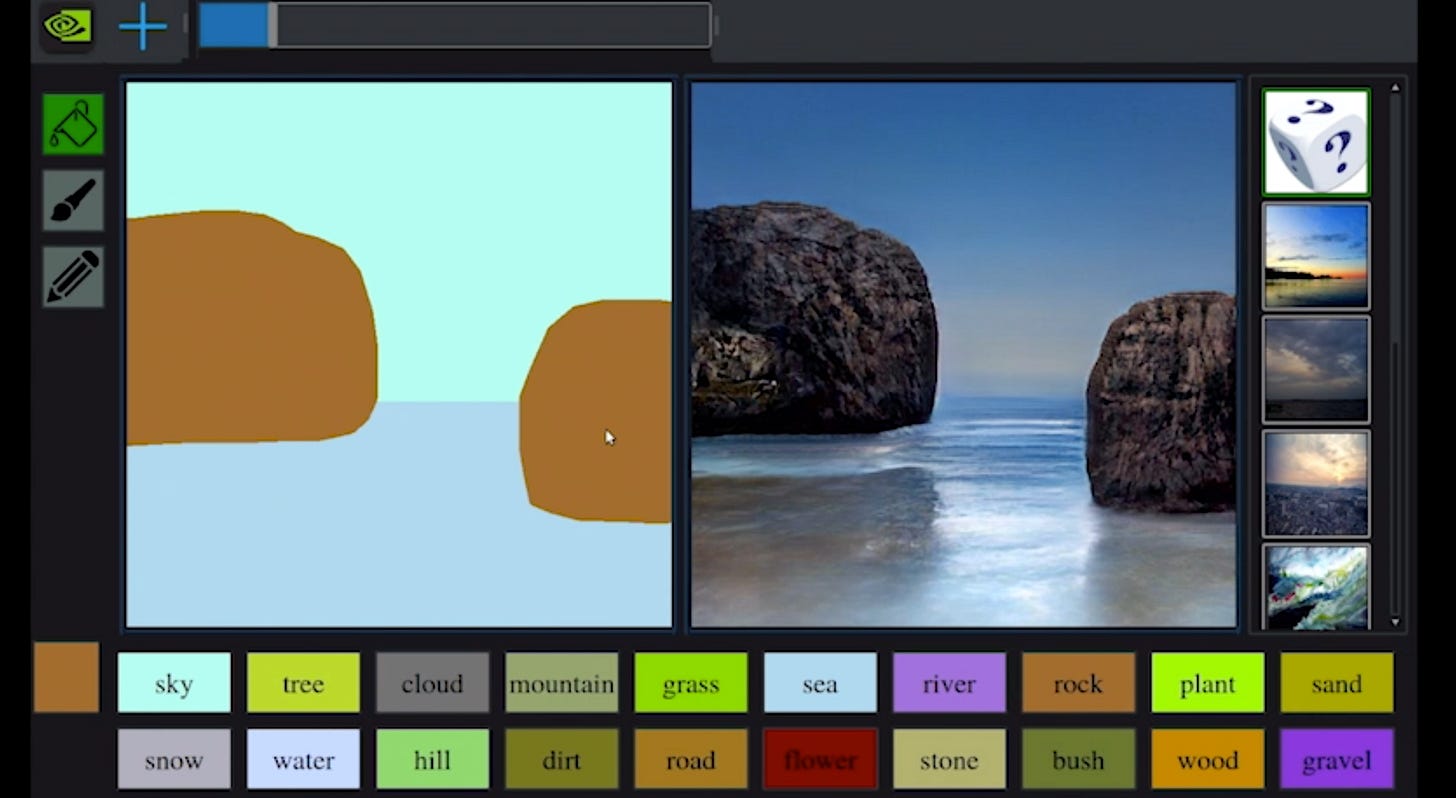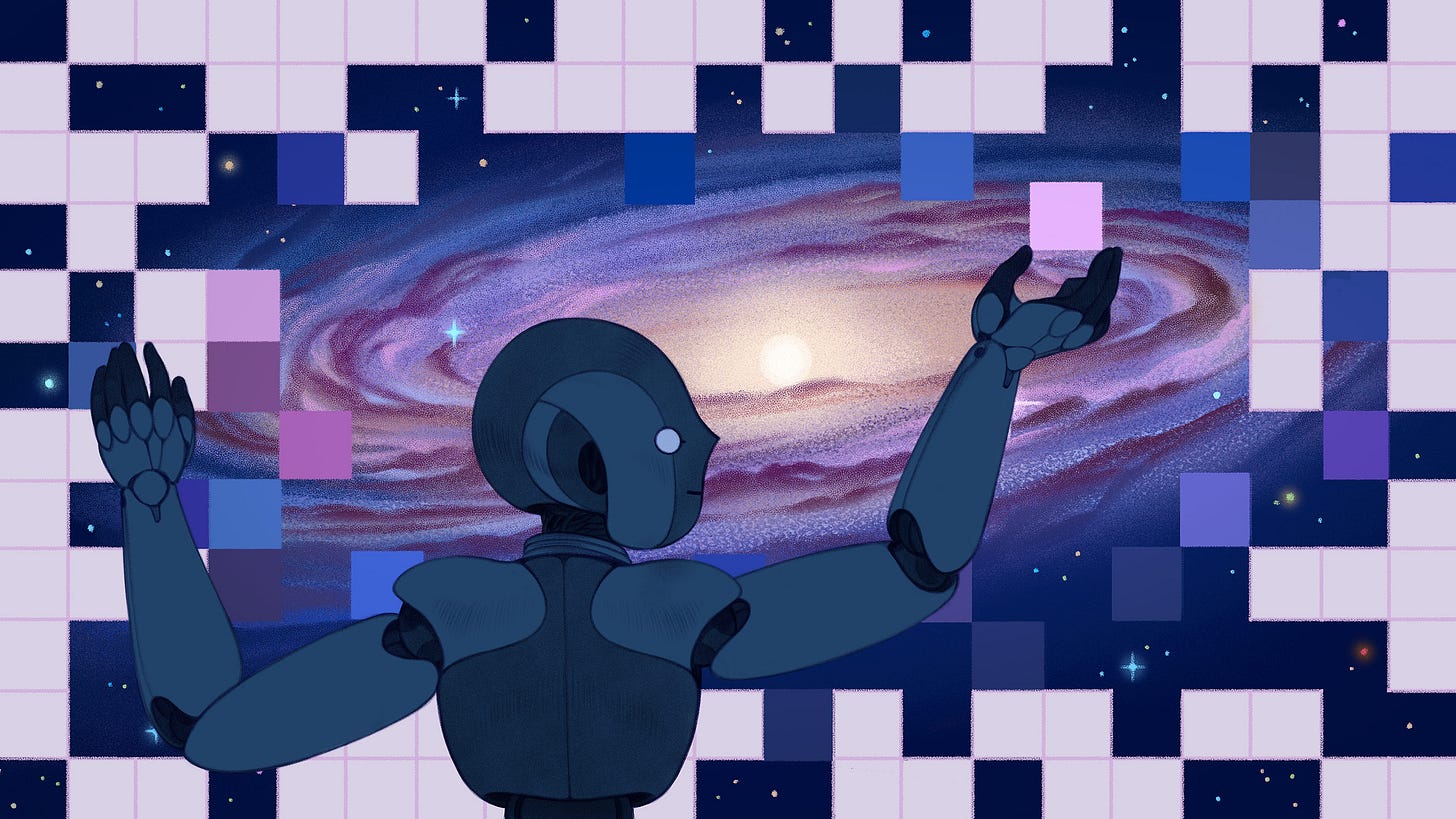In the previous newsletter we described some emerging AI technologies. This week we will have a look at some more emerging uses of AI. (new subscribers can read old newsletters on substack.com)
Anything is Possible
We have described GANs (Generative Adversarial Networks) and how they can create faces of people that don’t exist. This week I wanted to show you a new AI from Nvidia that creates landscapes from a rough sketched image.

The image on the left is drawn on the computer using a mouse. The AI creates the image on the right from its’ knowledge of landscapes. The AI has been trained by feeding it thousands, upon thousands of images of landscapes. A wide range of scenic images can be automatically generated and easily updated. The AI knows that detail like shadows and refections are important to the authenticity of the look of the landscape.
Think of the cost savings for movies, imagine how easy it will be for instagram influences to fake their selfies, you could even convince your friends you went camping on the weekend. Take a photo of yourself in front of a green screen, add your selfie to the GAN generated landscape and you can fool the world. Architects, designers, landscapers and others can use these systems in the professional work. The system is called GauGAN. A full video explaining the system and its’ capabilities is here.
From Intention to Innovation
AI is changing science in many ways. No human, or team of humans, could possibly keep up with the avalanche of information produced by many of today’s physics and astronomy experiments. Some of them record terabytes of data every day — and the torrent is only increasing. The Square Kilometer Array, a radio telescope to be built in remote Western Australia and slated to switch on in the mid-2020s, will generate about as much data traffic each year as the entire internet.
AI is the only way to analyze and understand such vast amounts of data. AI can sift through data at a much faster rate than the most highly trained humans and it can spot patterns that are too complex for humans to be able to spot.
For example, the way we spot planets that orbit around stars in other galaxies is we look for minor dips in the brightness of the star being observed. If those dips can be found to occur in a regular pattern then it is likely to be caused by a planet or other object regularly orbiting the star. The AI can identify the stars that may potentially host planets from the vast amounts of data. The human scientist can concentrate on validation. A way better use of the scientists time and the main reason why so many more planets are being discovered every day.

From Success to Significance
Since 2014, Deep Knowledge Ventures in Hong Kong has had a Board Director called Vital. What is unusual about Vital is that Vital is an Artificial Intelligence driven non-human Board Director. Deep Knowledge is a Venture Capital firm that invests in biotech startups.
Vital stands for “Validating Investment Tool for Advancing Life sciences”. It is used to remove human biases from investment decisions. Vital’s job is to map the predictors of risk. She can crunch across millions of data points across 50 parameters describing a target company, stock prices, clinical trials, IP holdings, personal records, research grants and more.
Vital was not legally a Board Director however the company rules said that the BOD could not approve an investment without Vital’s approval. Vital held a virtual veto power on all investment decisions. Vital has been so successful that Vital 2.0 is almost ready. Dr Alan Finkel, Australia’s Chief Scientist, has predicted that in the future there will be companies without human directors. Clearly this will require a change in the law but who knows what the future will bring.
Paying it Forward
If you have a start-up or know of a start-up that has a product ready for market please let me know. I would be happy to have a look and give the start-up a shout out to my readers if it is something that I think they could use. If you have any questions or comments please email me via my website craigcarlyon.com
Till next week.


